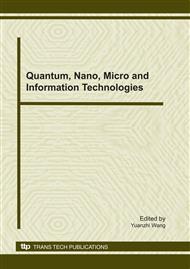[1]
Saaty T.L. Vargas L.G., Models, methods, concepts & applications of the analytic hierarchy process, Kluwer Academic Publisher, (2001).
Google Scholar
[2]
V.M.R. Tummala, T. Schoenherr, Best practices for the implementation of Supply Chain Management intiatives, International Journal of Logistics System and Management, vol, 4 no. 4, pp.391-410, (2008).
DOI: 10.1504/ijlsm.2008.017591
Google Scholar
[3]
R. Venkata Rao, Vendor selection in a supply chain using analytic hierarchy process and genetic algorithm method, Int.J. Services and Operations Management, 2007, Vol. 3, No. 3, pp.355-369.
DOI: 10.1504/ijsom.2007.013097
Google Scholar
[4]
Frederik Zachariassen, Negotiation stratagies in supply chain management, International Journal of Physical Distribution & Logistics Managemet, vol. 38 no. 10, pp . 764-781, (2008).
DOI: 10.1108/09600030810926484
Google Scholar
[5]
Korrakot Yaibuathet, Takao Enkawa, Sadami Suzuki, Influences of institutional environment toward the development of supply chain management, International Journal of Production Economics, vol. 115 no. 2, (2008).
DOI: 10.1016/j.ijpe.2008.02.018
Google Scholar
[6]
Hung Dang, On sensitivity ranking using analytic hierarchy process, International Journal of Uncertainty, Fuzziness and Knowledge-Based Systems, 2007, Vol. 15, pp.67-73.
DOI: 10.1142/s0218488507004613
Google Scholar
[7]
Lu Gao, Bingshu Tong, Xinghui Dong, Wei Luo, Suppliers evaluation system and methods, Machine Science and Technology, 2003, Vol. 3.
Google Scholar
[8]
M.N. Postorino & V. Fedele, The analytic hierarchy process to evaluate the quality service in transit systems, WIT Transactions on The Built Environment, 2006, Vol. 89, pp.775-784.
DOI: 10.2495/ut060751
Google Scholar


